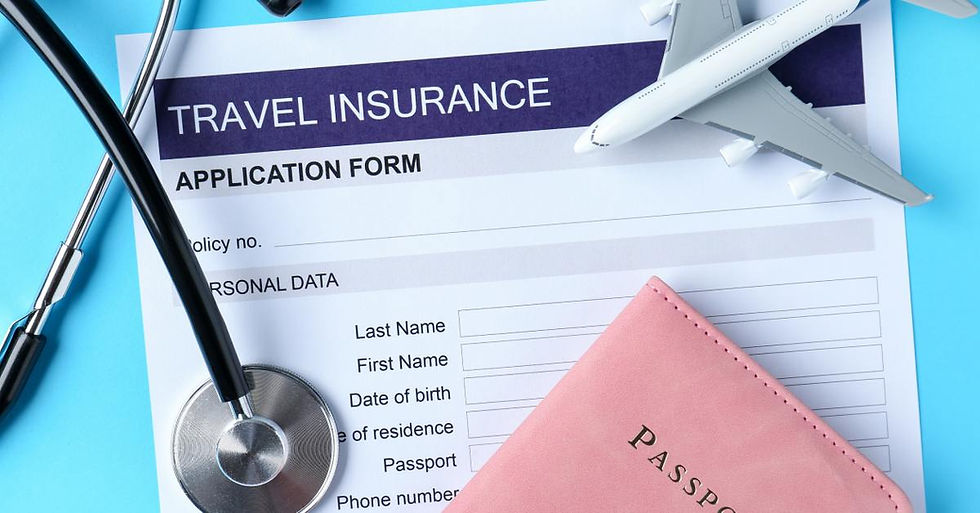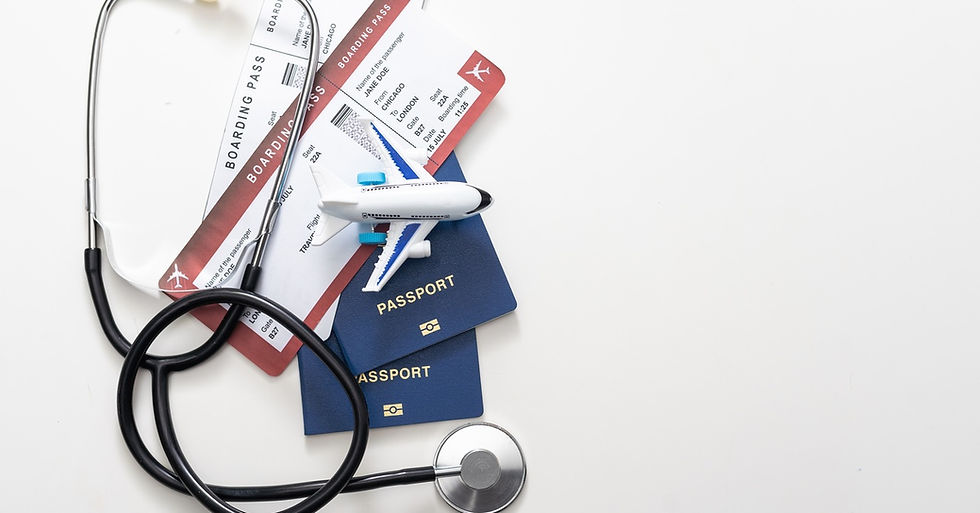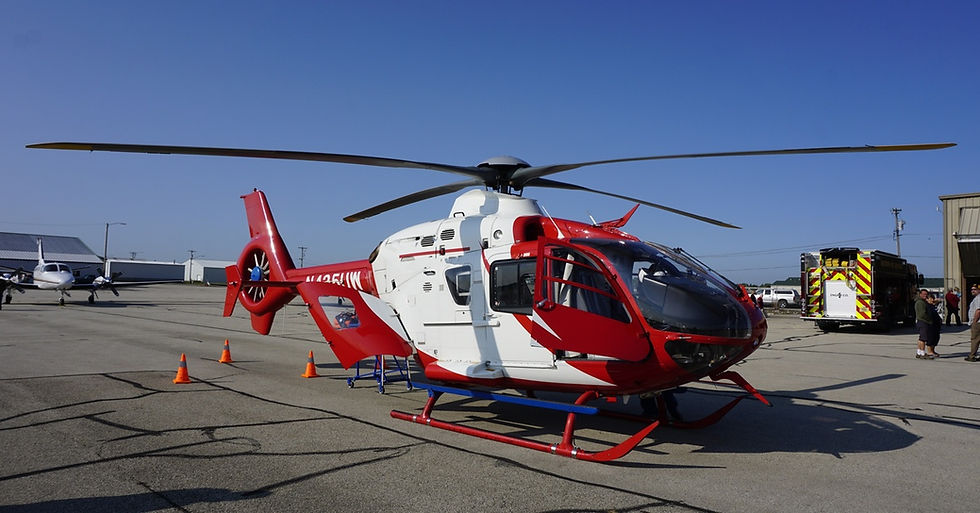How To Deal With a Medical Emergency While in Mexico
- juliangray1
- Sep 18
- 5 min read

Mexico attracts millions of visitors annually, with its stunning beaches, rich culture, and warm hospitality. Yet, amid the excitement of exploring ancient ruins or savoring authentic tacos, few travelers consider what might happen if a medical emergency were to strike far from home. Understanding how to deal with a medical emergency while in Mexico can turn a potentially life-threatening crisis into a manageable situation.
Medical emergencies don’t announce themselves or wait for convenient timing. Whether you’re an adventurous backpacker exploring remote villages or a retiree enjoying a peaceful resort vacation, being prepared for unexpected health issues is vital.
Understanding Mexico’s Healthcare Landscape
Mexico’s healthcare system is a diverse mix of public and private providers, each offering distinct levels of service and accessibility. Understanding how these systems operate, including the availability of care in different regions and the standards of medical facilities, is crucial for ensuring you receive the necessary assistance during your stay in the country.
Quality Varies by Location and Facility Type
Mexico’s healthcare system presents a complex picture that varies dramatically depending on where you find yourself. Major tourist destinations, such as Cancún, Puerto Vallarta, and Mexico City, typically offer higher-quality medical facilities equipped with modern technology and staffed by well-trained professionals. However, rural areas tell a different story entirely. Small towns and remote villages may have only basic clinics with limited resources and minimal staff.
Public vs. Private Healthcare Options
Mexico operates both public and private healthcare systems. Public hospitals, while more affordable, often struggle with overcrowding and long wait times. These facilities may require patients to wait hours or even days for non-emergency treatment, particularly if payment arrangements aren’t immediately clear.
Private hospitals typically provide faster and more comprehensive care, but they come with higher costs. These facilities usually maintain better staff-to-patient ratios and offer more comfortable accommodations during recovery periods.
Financial Realities of Emergency Care
While emergency medical services prioritize patient health and well-being, the associated costs can vary widely, depending on the type of facility, insurance coverage, and geographical location. Understanding these financial realities is crucial for navigating emergency healthcare effectively.
Upfront Payment Requirements
Mexican hospitals routinely require payment before providing treatment, a practice that can catch unprepared travelers off guard. This policy applies even in emergencies where you need immediate care. Many facilities will accept credit cards, but having cash available provides additional flexibility. The upfront payment system means you’ll likely need to pay your full bill and then seek reimbursement from your insurance company later.
Insurance Coverage Limitations
Most domestic health insurance plans, including Medicare and Medicaid, provide minimal or no coverage for medical services received outside the United States. Travel insurance specifically designed for international medical coverage is essential for protecting yourself financially. These specialized policies often include provisions for emergency medical evacuation, which can cost tens of thousands of dollars when arranged independently.

Communication Strategies During Emergencies
When language barriers threaten to impede your medical care, several strategies can bridge the gap. Visual communication through gestures and pointing can convey basic needs and symptoms. Writing down key information, including medication names and medical conditions, provides medical staff with crucial details they can review and translate if necessary.
Medical Translation Services
Many private hospitals in tourist areas maintain relationships with professional medical interpreters who can facilitate communication between patients and medical staff. Don’t hesitate to request interpreter services, as clear communication about symptoms, medical history, and treatment options directly impacts the quality of care you receive.
Understanding Emergency Services
Mexico’s emergency number is 911, the same as in the United States and Canada. Emergency operators in major tourist areas often speak English, but this isn’t the case in all regions. When calling for emergency assistance, speak clearly and provide your exact location, including nearby landmarks or addresses.
Medical Evacuation Considerations
Serious medical emergencies may require evacuation to facilities with specialized capabilities or transport back to your home country for ongoing care. Medical evacuation services involve complex logistics, including obtaining flight permits, complying with customs requirements, and coordinating with medical facilities across international borders.
The cost of medical evacuation from Mexico to the United States or Canada typically ranges from $25,000 to $75,000, depending on the destination and medical complexity of the transport.
Air Ambulance Logistics
Medical evacuation requires specialized aircraft equipped with hospital-grade medical equipment and trained medical crews. The process involves more than arranging transportation; it requires patient evaluation, risk assessment, coordination of ground transportation, and compliance with international aviation regulations.
Some air ambulance providers hold special permits for operating in Mexico, enabling faster response times compared to companies that must obtain permits for each individual flight.
As a commercial air ambulance, Blue Sky Aeromedical provides top-tier medical transport services designed to give you confidence and peace of mind every step of the way. Our highly trained medical staff has state-of-the-art equipment to ensure your health and safety are always the top priority. Trust Blue Sky Aeromedical for compassionate, professional service when it matters most.

Pre-Travel Preparation Strategies
Preparing for medical air travel requires careful planning and attention to detail to ensure a safe and seamless experience. By addressing key factors, such as medical documentation and understanding destination requirements, patients and their families can feel confident and well-prepared for the journey ahead.
Essential Documentation
Before departing for Mexico, create copies of important documents, including your passport, insurance cards, and medical records. Store these copies separately from the originals and consider emailing digital copies to yourself for online access during emergencies.
Maintain a comprehensive list of current medications, including dosages and the contact information of prescribing physicians. Include information about allergies and sensitive medical conditions that emergency medical personnel should know about immediately.
Embassy Registration and Communication
Register your travel plans with your country’s embassy or consulate in Mexico. This registration enables authorities to locate you in the event of an emergency and provides a communication channel for receiving important safety updates during your stay.
Ensure regular communication with family or friends at home, informing them of your general whereabouts and expected check-in times. This communication network becomes invaluable in emergency situations when you need assistance from home.
Preparation Brings Peace of Mind
Being prepared for medical emergencies transforms potential disasters into manageable challenges. While no one wants to think about getting sick or injured while traveling, taking the time to understand the healthcare system, securing appropriate insurance coverage, and preparing essential documentation provides invaluable protection.
The key to successfully navigating how to deal with a medical emergency while in Mexico lies in thorough preparation before you leave home. Research medical facilities in your destination areas, understand your insurance coverage limitations, and maintain essential medical information in easily accessible formats.




Comments